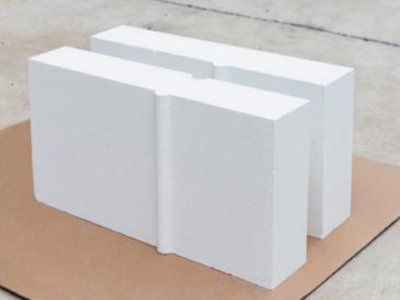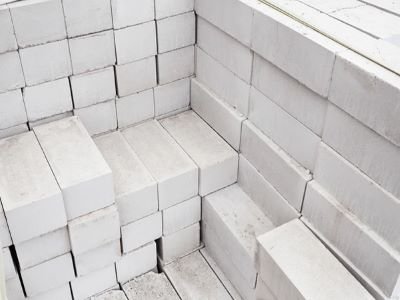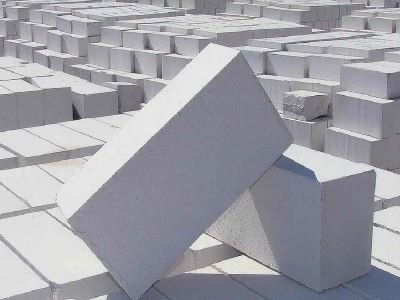Address
Building 1, Zone 1, Greenland Binhu International City, Zhengzhou, Henan, China
Work Hours
Monday to Friday: 9AM - 7PM
Weekend: 10AM - 6PM
Address
Building 1, Zone 1, Greenland Binhu International City, Zhengzhou, Henan, China
Work Hours
Monday to Friday: 9AM - 7PM
Weekend: 10AM - 6PM
In high-temperature industrial applications, refractory materials are crucial for the safe operation of equipment. Silica bricks are widely used due to their excellent high-temperature performance. However, in recent years, a counterintuitive material—calcium-free silica bricks—has emerged as a promising alternative to conventional materials, demonstrating their calcium-free nature and increased durability in demanding environments.
Traditional silica bricks are primarily composed of silicon dioxide (SiO₂), typically containing a small amount of calcium oxide (CaO) as a mineralizer.
The addition of calcium is initially beneficial. It significantly lowers the firing temperature of silica bricks and promotes the conversion of quartz to tridymite and cristobalite, thereby increasing the brick’s density and room-temperature strength.

However, in high-temperature environments, the side effects of calcium gradually become apparent.
At high temperatures, calcium reacts with SiO₂ to form low-melting-point silicate glass phases (such as anorthite and gehelite).
These glass phases soften and melt at high temperatures, becoming weak links in the material structure and significantly reducing the material’s softening-under-load temperature and high-temperature creep resistance.
These low-melting-point glass phases are easily penetrated and dissolved by corrosive media such as molten slag and metal oxides, accelerating material degradation.
They are also more susceptible to reacting with the corrosive media, forming new low-melting products, further deteriorating material properties.
The transitions between different crystal forms (quartz, tridymite, and cristobalite) in silica bricks are accompanied by volume changes.

The presence of calcium interferes with the stable transformation of these crystal forms. Consequently, temperature fluctuations during use can lead to significant internal stresses, increasing the risk of cracking.
The core innovation of calcium-free silica bricks lies in the complete removal of calcium. This seemingly “subtraction” actually results in significant performance improvements.
Through carefully selected high-purity silica raw materials and advanced firing processes, calcium-free silica bricks form a purer and more stable cristobalite or tridymite crystal framework at high temperatures.
These crystals inherently possess extremely high refractoriness and high-temperature structural strength, eliminating the “drag” of a low-melting-point glass phase.
This significantly increases the softening-under-load temperature and high-temperature creep resistance.
The pure silicon skeleton structure is denser and more uniform, significantly reducing the penetration pathways and reaction points for corrosive media.
This gives calcium-free silica bricks excellent resistance to slag, alkali, and CO2 corrosion, enabling them to perform exceptionally well in harsh environments such as molten metal and slag.
Without the interference of calcium, the crystal transformation process in silica bricks is more controllable and complete.
This gives calcium-free silica bricks better volume stability and thermal shock resistance, allowing them to withstand severe temperature fluctuations without cracking or spalling, extending their service life.
Achieving “calcium-free for longer life” is no easy task; it relies on the following key factors.
Use higher-purity silica and strictly control the content of impurities (especially CaO, Al₂O₃, Fe₂O₃, etc.).
Optimized particle size distribution, molding pressure, and firing schedule ensure a high-density, high-crystallinity pure silica brick structure, even without calcium additives.
Sometimes, small amounts of other oxides (such as TiO₂ and Cr₂O₃) are introduced as mineralizers.
Their mechanism of action differs from that of calcium, promoting crystal transformation and sintering without generating low-melting-point phases.

By removing calcium through a crucial step, calcium-free silica bricks overcome the inherent shortcomings of traditional silica bricks in high-temperature performance, corrosion resistance, and thermal shock stability, achieving a leap in performance.
They embody the wisdom of “reducing efficiency while increasing efficiency” in the refractory industry, providing a more reliable and durable solution for the modern high-temperature industry’s pursuit of higher efficiency, longer lifespan, and lower energy consumption.
Choosing calcium-free silica bricks means choosing a rock-solid guardian that remains undamaged even under extreme temperatures.